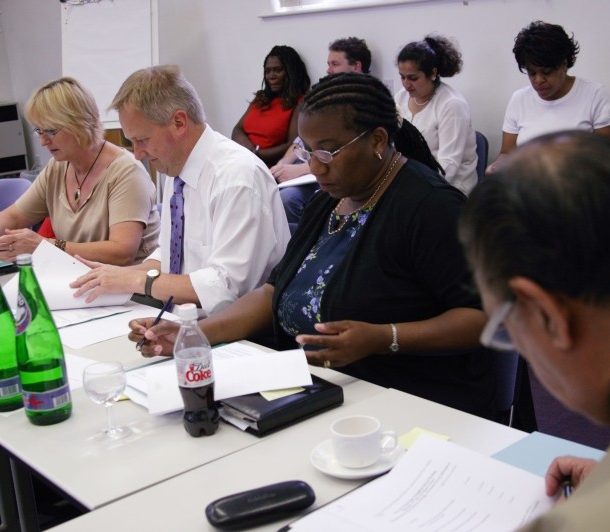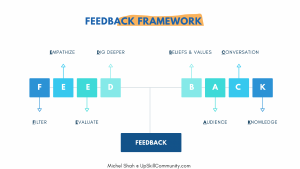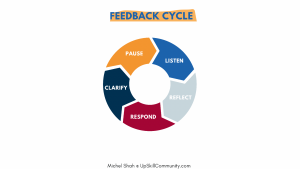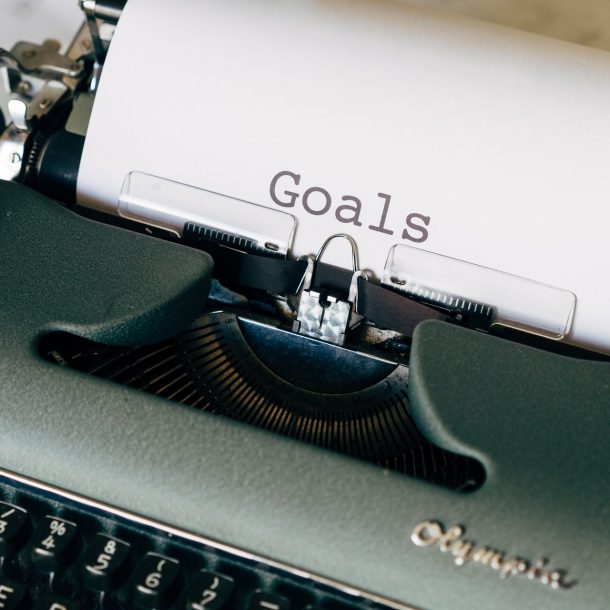
UpSkill: How to Use the Receiving Feedback Cycle to Receive Feedback Constructively
How to Use the Receiving Feedback Cycle to Receive Feedback Constructively
The world of work is characterized by rapid ongoing change. In this dynamic environment, one of the most critical skills for leaders is the capacity to build connections, adapt to the rapid pace of change and engage in the continuous development of skills in order to effectively lead self and others.
Over the course of the pandemic, new conversations have emerged, old conversations have resurfaced, new voices are joining the conversations, there are new perspectives and diverse ways of thinking and working together. We are dealing with a lot of uncertainty and we are questioning ourselves and others from time to time.
In this climate, self-awareness can’t be static. We are forced to engage in ongoing dialogue about who we are and how we are showing up. Internal awareness alone is inadequate, our external awareness is critical now more than ever. That requires a balance in focus on both internal and external self-awareness as described by Tasha Eurich.
When everything else is shifting, can we continue to give and receive feedback in the same ways and expect the same results?
I don’t think so. I think we need to re-evaluate how we give and receive feedback in this shifting context. This has been part of our leadership conversations for self-awareness season inside Upskill Community.
We discovered that there is far more guidance available on how to give feedback than there is on how to receive feedback. In many cases though, it is much more challenging to receive feedback than to give it. Since we all engage in both practices on an ongoing basis, it may be worth reflecting on how we actually process feedback and the impact that this new climate has on feedback we receive, who gives us the feedback and how we receive it.

The Feedback Framework offers guidance on how to “Reflect” constructively on feedback. The Receiving Feedback Cycle demonstrates that receiving feedback should precede processing of feedback. I will provide additional information on the Feedback Framework in subsequent blogs. For now let’s focus on the Receiving Feedback Cycle.
The Receiving Feedback Cycle begins with a Pause. This pause is important to create space to engage with the content of feedback, the feelings associated with the feedback and demonstrate receptiveness to the feedback and the giver. The pause acknowledges the giver, demonstrates respect, and signals your intent to participate in the process of receiving feedback. Pause may mean putting your phone down, moving to a private space, or shifting away from anything that could distract from your full attention.

The pause gives way for you to fully Listen, which is the next step in the cycle. To listen is to consciously and intentionally give your full effort to making sense of the message. That involves noticing the nonverbal communication and ensuring you capture the fullest meaning of the verbal communication. Listening is an active process. It is a dialogue between the giver and the receiver to tease out deeper meaning. The receiver is the facilitator of that dialogue. Take time to clarify, decode, and get specific examples. Use language such as: Tell me more about that? When did you notice that? Can you give me another example of a time when this happened? Listening does not involve cutting people off, justifying your actions or words or providing scapegoats and detractors. Listening is an active process focused on the receiver, giver and the message as well as attempting to uncover what’s behind each element, as I outlined in Behind the Feedback in a previous blog.
As you go back and forth in the dialogue you will gather information to Clarify your understanding of the specifics of the feedback. This doesn’t have to happen in one sitting. Additional information to provide clarity could be offered after the initial sharing. However, hold on to your response until you have done gathering all the information. I know responding is tempting. Sometimes this is difficult to do when you receive feedback in public, but it is still important to follow this process.
You can offer to respond once you have had a chance to Reflect on the feedback. That is the step after you clarify. You want to ensure you have gathered all the information, clarified exactly what it means before you begin to reflect on the feedback.
The Feedback Framework which will be covered in a subsequent blog, guides you through the reflective process step by step. The first step uses the Feedback Filtering Funnel to clean the feedback. Take time to understand and make sense of the complete feedback you received. This takes a lot of work to achieve but is very worthwhile because of how crucial feedback is to your development.
Respond to feedback only after you have gone through the complete process: Pause, Listen, Clarify, Reflect… now you are ready to respond.
You are likely to work through strong emotions as you go through this process, gain clarity on how you can use different nuggets to support your goals and figure out what adds no value and needs to be dismissed. But don’t rush to judgement before you receive and process the feedback appropriately.
Author, Educator, UpSkiller

